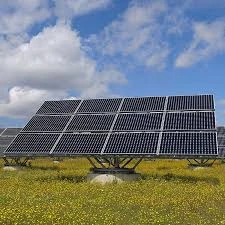Typical Dimensions of Solar Panels for Residential and Commercial Use
Understanding Normal Solar Panel Size
As the world embraces renewable energy sources, solar panels have gained prominence for their ability to harness the sun's energy. A critical aspect for homeowners and businesses considering installing solar panels is understanding the normal size of these units and how it impacts energy production.
Understanding Normal Solar Panel Size
When considering the installation of solar panels, it’s important to evaluate how many panels will fit on a roof and what that will mean for energy generation. The average household consumes around 877 kWh per month in the United States. To meet this demand, a typical home may require around 20 to 25 solar panels, assuming the use of panels with an average efficiency. This indicates a roof area of approximately 400 to 650 square feet, depending on the panel's efficiency and orientation.
normal solar panel size

The efficiency of solar panels, which can range from around 15% to over 22%, plays a significant role in their size and the total energy output. Higher efficiency panels can produce more energy from a smaller area, making them ideal for homes with limited roof space. Conversely, if roof area is not an issue, consumers might opt for larger or less efficient panels, which can be more cost-effective.
Another factor influencing solar panel size is the type of solar technology used. Monocrystalline panels, known for their high efficiency and sleek appearance, tend to be more compact than polycrystalline panels, which are generally larger and less efficient but often come at a lower price. Thin-film technology offers even more lightweight and flexible options but usually requires more space for installation due to lower efficiency rates.
Installation planning also encompasses local regulations, building codes, and potential shading from trees or other structures, which can affect the energy output and optimal placement of solar panels. Solar panel size and the resulting power output are, therefore, not only determined by the panels themselves but by the overall system design and the specifics of the installation site.
In conclusion, understanding normal solar panel size is essential for any individual or business considering solar energy. By evaluating average dimensions, power output, efficiency, and local conditions, potential solar adopters can make informed decisions that optimize energy production and ensure the best return on investment. With the ongoing advancements in solar technology, the future looks bright for solar energy as a sustainable solution for many.
-
Unlocking Energy Freedom with the Off Grid Solar InverterNewsJun.06,2025
-
Unlock More Solar Power with a High-Efficiency Bifacial Solar PanelNewsJun.06,2025
-
Power Your Future with High-Efficiency Monocrystalline Solar PanelsNewsJun.06,2025
-
Next-Gen Solar Power Starts with Micro Solar InvertersNewsJun.06,2025
-
Harnessing Peak Efficiency with the On Grid Solar InverterNewsJun.06,2025
-
Discover Unmatched Efficiency with the Latest String Solar InverterNewsJun.06,2025







